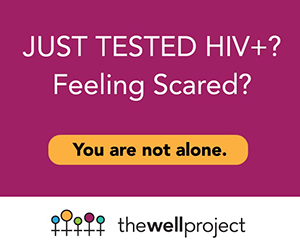Jennifer Johnsen, MD, MPH, Managing Editor
Last week, I was privileged to attend the 3rd International Workshop on HIV and Women in Toronto, Canada. It was a wonderful gathering of researchers, clinicians, and others committed to forwarding our knowledge and understanding of how HIV affects women. The two-day conference focused on four areas:
Contraception
It should be no surprise that contraception was an important topic, since there are 1.75 billion women worldwide of child-bearing age. Of those, an estimated 150 million are using hormonal contraceptives (HCs).
Recently, some HIV studies have suggested that HCs may increase a woman's risk for getting HIV. A review of 17 studies meeting minimum quality standards found that two of the 17 show an increased risk of getting HIV for those taking oral contracteptives (OCs, or birth control pills) while six show an increased risk for getting HIV for women using Depo-Provera (DMPA, or the birth control shot).
Based on the unclear picture painted by existing research results, there is an urgent need for high-quality evidence to answer the question of if/how HCs affect women’s risk of getting HIV. There is also very limited evidence available on whether HC use among women living with HIV (HIV+) changes their risk of spreading HIV to others.
What does seem clear, however, is that HC use effects neither HIV disease progression nor women's viral load or CD4 cells.
Other encouraging news included presentations suggesting that:
- Viramune (nevirapine), an HIV drug commonly included in first-line treatments recommended by the World Health Organization (WHO), does not decrease the effectiveness of oral contraceptives
- There was no spread of HIV between members of heterosexual serodiscordant couples in which the HIV+ partner's viral load was fully suppressed on HIV drugs in a review of several research studies
- There are some anti-inflammatory agents (IL-22 and curcumin) that have been shown to protect female genital tract cells against HIV in the lab
Hepatitis C
Our introduction to this topic began with a presentation that painted a grim picture of the hepatitis C (HCV) epidemic in Eastern Europe and Russia. Worldwide, the two primary risk factors for getting hepatitis C continue to be injection drug use (IDU) and sexual contact.
On a more promising note, new HCV treatment regimens including Victrelis (boceprevir) and Inciveck (telaprevir) are proving to be highly effective in women. Approximately 40 percent of study participants in phase 3 clinical trials of these drugs have been women, and researchers have not seen any sex-based differences in effectiveness.
Another exciting development is a once-daily oral treatment for HCV that does not contain interferon (INF). This is likely to be available within the next few years, would spare many the side effects of INF, and would give new treatment options to those still infected with HCV after treatment with INF-containing regimens.
HIV and Aging
This subject has been getting quite a bit of attention lately, due to the growing numbers of people living and aging with HIV. While aging is a normal process that affects everyone, frailty is disease state characterized by decreased bone and muscle mass, mild anemia, thinking problems, depression, and/or increased inflammation. Several of frailty's features occur among HIV+ people who have been taking HIV drugs for 20 years or more and appear to be the result of 'accelerated aging.' So far, there have not been any sex-based differences in HIV-associated accelerated aging.
Estrogen, which is protective in regards to aging, exists in much smaller amounts after menopause. In a way, menopause can be thought of as an "end of warranty" period after which the effects of aging increase. Therefore, it is important when conducting research not to divide women simply into pre- and post-menopausal groups, but to include time since menopause.
Prevention
This topic featured some excellent presentations, including one that showed how the same set of research results could lead to different conclusions and different country guidelines for the prevention of mother-to-child transmission of HIV (US Department of Health and Human Services v. British HIV Association). Another presentation introduced research in Canada that is exploring poor pregnancy outcomes (low birth weight and pre-term birth) among HIV+ women by looking at blood samples throughout pregnancy and placenta collection at delivery.
Lastly, a discussion of pre-exposure prophylaxis (PrEP) and microbicides for women revealed how a closer look at the different groups of women studied in several of the PrEP trials (e.g., FemPrEP, Partners PrEP, TDF2) and microbicide studies (e.g., Caprissa 004, VOICE) may help to explain conflicting results. The effectiveness of a given prevention method among young women living in urban areas may be quite different from the effectiveness of the same method among older women in rural areas.
One of the most important points made about prevention is that any method that women want to use will be much more successful. No matter how safe or effective a prevention method may be, it will not work if women do not use it. Therefore, it is crucial that women be included in the development of future methods to prevent the spread of HIV.
Conclusion
The International Workshop on HIV and Women featured the research and experience of many top-quality presenters working diligently on topics specific to women living with HIV. As many of them pointed out, the relative lack of good HIV research and evidence by, for, and about women needs immediate attention. Women's involvement is crucial if we are to answer many of the outstanding questions that will help us all 'get to zero.'




